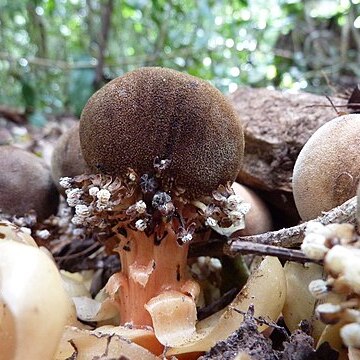Plant monoecious or dioecious, yellow, orange-yellow, yellow-brown or pink, to c. 20 cm long, root parasite. Leaves 10–35, alternate, imbricate, irregularly shaped, mostly ovate or obovate, obtuse, slightly cucullate, 1–3 cm long, 1–2 cm wide. Inflorescence unisexual or bisexual, monoecious plants with female flowers above males. Male flowers pedicellate, actinomorphic, 3–6-merous; tepals to 7 mm long; anthers horseshoe-shaped. Female flowers with spadicles obconical or stalked obconical to obovoid; carpels to 0.5 mm long; styles to 1.5 mm long.

